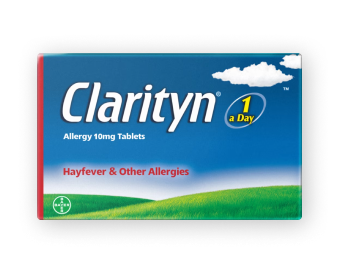What is rapeseed pollen?
Rapeseed is a common crop grown for its seeds, which can be converted into canola oil (or rapeseed oil) and used in various products.
Whether in cooking oil, lamp fuel, soaps, margarine, jet engine lubricants or biodiesel, rapeseed’s benefits and versatility explain why it’s grown in such high volumes around the world.
As it grows and progresses through its reproductive cycle, rapeseed produces a pollen that’s both sticky and heavy. Insects (especially honeybees and bumblebees) transport pollen as they travel from flower to flower, sometimes making it airborne (carried through the air) and increasing our chances of breathing it in.
Wind can carry rapeseed pollen too, but it doesn’t travel as far as lighter types like grass or tree pollen. So, being exposed to rapeseed pollen is fairly rare unless you’re in very close proximity to it (within 50 metres).
In addition to pollen, rapeseed plants have also been shown to emit various volatile organic compounds (VOCs) during their flowering period. While more research needs to be done to understand the role these compounds play in triggering hayfever -like symptoms, they may also contribute towards sensitivities in some people.
What are the symptoms of rapeseed pollen allergy?
Rapeseed pollen is far less likely to trigger hayfever symptoms than other types of pollen, such as grass or tree pollen.
That said, if you’re sensitive to rapeseed you may still develop symptoms like:
- Coughing and sneezing
- A runny or blocked nose
- Itchy, red and watery eyes
- Tiredness
- Headaches
- Itchy throat, mouth, nose or ears
- Loss of smell
- Pain around the sides of your head and forehead
When is hayfever season for rapeseed pollen?
Some people may notice hayfever-like symptoms during rapeseed’s flowering season, which normally starts towards the end of March, around the beginning of spring. However, reactions to rapeseed tend to be a lot less common than those caused by other types of pollen.
Factors like the climate, wind and the amount of daylight can all influence how long hayfever symptoms last. If you’re concerned about any symptoms you’re experiencing, it’s always best to speak to your local pharmacist for advice.
What causes rapeseed pollen allergy symptoms?
If you inhale rapeseed pollen while you’re out and about, your body may falsely recognise it as a potential threat and trigger an allergic reaction. This can result in you experiencing some or all of the various symptoms listed above.
While scientists still don’t know why this affects some people but not others, certain factors may increase your risk of developing hayfever, such as having a family history of allergies, asthma or eczema.
That said, it’s worth noting that many of the symptoms you experience could be linked to other environmental triggers, such as VOCs or the dust that rapeseed releases, rather than the actual rapeseed pollen itself.
Treatments for rapeseed pollen allergy
For some people, being exposed to rapeseed pollen may leave them feeling itchy and uncomfortable. But the good news is that there are things you can do to help manage your symptoms if and when they appear.
Antihistamines, for example, are often used to relieve hayfever symptoms caused by common allergens.
While there is currently no treatment licensed to treat rapeseed allergies specifically – and rapeseed isn’t recognised as a common allergen – general antihistamines may help to provide relief from your symptoms.
Available over the counter from your local pharmacy and supermarkets, antihistamines come in several different forms and work by blocking the effects of histamine – a substance your body releases when it mistakenly identifies something harmless as a potential threat.
Clarityn® Allergy Tablets, for example, are a form of antihistamine designed to offer up to 24-hour relief from the symptoms of over 150 indoor and outdoor allergens.
However, there are also other treatments you can use to help combat specific hayfever symptoms.
Take Clarinaze® Allergy Control Nasal Spray. This is a steroid nasal spray designed to provide effective relief from sneezing and an itchy or runny nose.
Choosing the right treatment for you will depend on your symptoms, so it’s best to speak to a pharmacist if you’re ever unsure.
Living with a rapeseed pollen allergy: management techniques
If you find that you’re sensitive to rapeseed, or that its flowering season triggers symptoms, there are steps you can take to reduce your exposure and minimise any discomfort.
Here are a few ideas to help you get started:
- Keep an eye on the pollen forecast to avoid high pollen counts
- Limit the amount of time you spend outside and around fields of rapeseed (particularly between March and July)
- Use wraparound glasses, face masks or wide-brimmed hats to stop pollen from getting into your eyes
- Keep your doors and windows closed when possible
- Dust around the house using a damp cloth
- Use a hoover with a high-efficiency particulate air ( HEPA ) filter to vacuum regularly
- Shower and change your clothes after spending time outside
- Avoid drying your clothes outside, as they can catch pollen
- Keep your pets outside if possible and wash their bedding regularly, as they can carry pollen indoors
- Apply petroleum jelly around your nostrils to help trap pollen before it enters your nose
If you’re looking for more specific advice, your doctor or local pharmacist can offer tips tailored to your exact needs. Be sure to speak to them to identify the most effective ways to limit your potential exposure!
Rapeseed pollen is just one of many environmental factors that may contribute to hayfever-like symptoms in sensitive individuals. To learn more about what else can cause hayfever, such as dogs, cats, mould and dust mites, check out our dedicated ‘Living with allergies’ blog.







